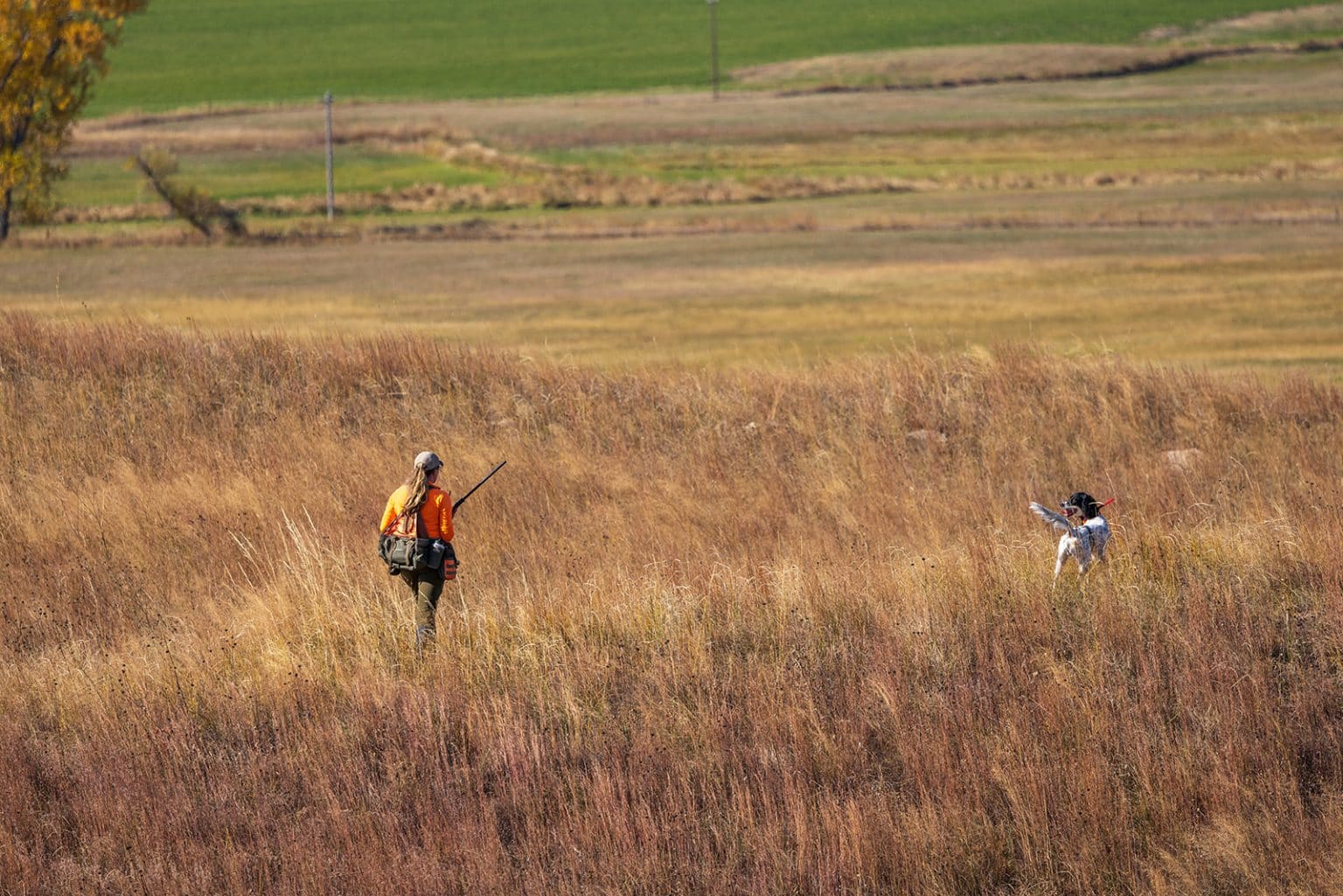Early summer may seem like the most dangerous time for grass seeds and dogs, but August marks the start of what many gun dog owners consider among the most concerning. Late summer is when grass seeds have baked in the summer heat and turned hard as a rock, and worse yet, they’re often lying on the ground. Earlier in the summer, the concerns are of gun dogs inhaling seeds as they run through tall grass, or getting them lodged under an eyelid or in an ear. Valid concerns, no doubt, but now is a time when many gun dogs get barbed seeds like Foxtail seeds burrowing into their feet, and it can bring their hunting season to a halt…or worse.
Foxtail seeds are among the most dangerous for a Dog
Foxtail seeds, often called awns, are the most dangerous throughout the country. This noxious grass produces a cluster of seeds at the top that resemble a fluffy fox tail. When the seeds drop off the stalk, their backward-facing barbs are designed so the seed can “dig” into the ground in the coming months. If a dog steps on these barbed seeds, they can become embedded in the toes or webbing between the toes and keep working their way into the dog’s muscles, even body cavities.
Recently, a buddy’s dog got a foxtail in its foot. It traveled up the front leg. He took the dog in for surgery, and though they split the leg all the way past the elbow, they never found the seed. After a $5,000 vet bill, they put the dog on antibiotics. Today it’s doing fine.
That was one of the lucky dogs. These nasty seeds have been known to travel all the way to the spine and cause nerve damage, even death by infection when they abscess in parts of the body. My vet told me last summer he averaged seeing one dog a day with a foxtail in the foot; in years prior, the average was one a week.
Last fall, both of my dogs got foxtails in their feet. Neither dog showed any sign of discomfort, and I didn’t notice either of them until the entry wound started to swell. They kept running, worked hard on every hunt and training session, and never licked, limped, or whined. In both dogs, I noticed inflamed pink spots between their toes when drying their feet after a hunt.
Kona’s spot was red and inflamed. After a couple of days, it festered, and I tried popping out the seed. It didn’t happen. The next day, I took Kona to the vet. They sedated Kona and fished around the entry wound with long forceps, hoping to latch on to the seed. They couldn’t find it. I had a decision to make: leave it and hope it festered, kept burrowing in the right direction, and popped out, or have surgery. Surgery would mean a long recovery time and a lost hunting season. Because the festered area seemed localized around a knuckle and not migrating up the leg, my vet and I concluded I’d keep an eye on it. Five days later, the seed worked its way out, a half-inch from where the vet tried digging it out.
Two months later, Echo picked up a foxtail in the webbing of her toes. It entered more from the bottom of her foot. A visit with my vet left us hoping the seed would continue traveling in a straight path and pop out the top of the foot. “If it doesn’t pop out in a few days, bring her in,” the vet told me. It didn’t. “The seed doesn’t seem to be moving, and rather than dig around, let’s just see what happens,” he said. The redness and swelling hadn’t progressed, and the wound was sealed. Echo was going full speed, even duck hunting a few times a week. My thinking was that the more active she was, the greater the likelihood of the seed working its way out. The vet put her on antibiotics. Twenty-three days after I noticed it, the seed festered, and I pulled it out. The barbs were sharp, and the seed was hard.
I was under the assumption that these seeds eventually dissolved. My vet told me otherwise. Echo only missed a few days of hunting. Because Kona’s wound was open, he missed two weeks of hunting.
Best ways to keep Foxtail seeds and others from your Dog’s feet
I’ve always trimmed the hair on the feet and between the toes of my dogs in order to prevent grass seeds from getting caught. Then a trainer told me he leaves the hair between the pads long, so it captures the seed rather than having it directly puncture the skin and immediately start burrowing in. He did emphasize that if I kept the hair long, I should check it multiple times a day because spiked seeds are more easily trapped in the hair and need to be removed before they burrow into the skin.
There are other spiked weed seeds to watch for as fall progresses. Some of these seeds drop early, while others stay on the vine until heavy rains dislodge them in late fall. These seeds aren’t as life-threatening as foxtails, but they can cause serious eye and ear damage, even infection, if they go unnoticed.
The best grass seed prevention is continual inspection. Look for seeds, feel for them in longer hair, and brush any areas of concern. Don’t count on a working gun dog to let you know there’s an issue, as their drive to hunt overrides any pain or irritation they might be experiencing. By being aware and prepared to deal with dangerous seeds, not only can you save your dog’s hunting season, but possibly its life.
Note: Watch Scott’s basic puppy training videos and learn more about his many books at scotthaugen.com. Follow his adventures on Instagram & Facebook.

